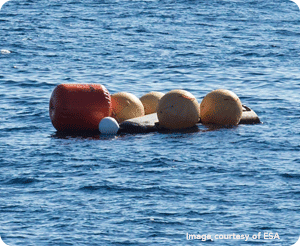IXV successfully concludes its research mission

Right on schedule, on 11 February at 13:40 GMT (14:40 CET), the Intermediate eXperimental Vehicle (shortened to IXV), lifted off from Europe’s Spaceport in Kourou, French Guiana, atop a Vega rocket. IXV is the European Space Agency (ESA)’s atmospheric reentry demonstrator vehicle.
IXV separated from the rocket at a height of 348 km and then continued climbing up to 413 Km. During its reentry it recorded a vast amount of data from more than 300 sensors.
As it descended, the five-meter-long, two-ton craft maneuvered to decelerate from hypersonic to supersonic speed. The entry speed of 7.5 km/s at an altitude of 120 km created the same conditions as those for a vehicle returning from low Earth orbit. IXV glided through the atmosphere before parachuting down to a safe splashdown in the Pacific Ocean.
This is a red-letter event. The aim of the mission is no less than to demonstrate critical reentry technology for both autonomous and crewed earth-return missions. Mastering reentry is crucial for ESA in order to develop reusable launcher stages and carry out sample-return missions from other planets and crew-return missions from space, as well as for future Earth observation, microgravity research, satellite servicing and disposal missions.
GMV has played a key role in the development of the IXV technology demonstrator, holding responsibility for four activities: the Onboard Software (OBSW), the Software Validation Facility (SVF), vehicle navigation as part of the GNC system and Vehicle Model Identification (VMI) or identification of reentry aerodynamic parameters.
Although the mission’s initial results are not likely to be published for another six weeks or so, it is already clear the navigation and onboard software designed and implemented by GMV worked perfectly.